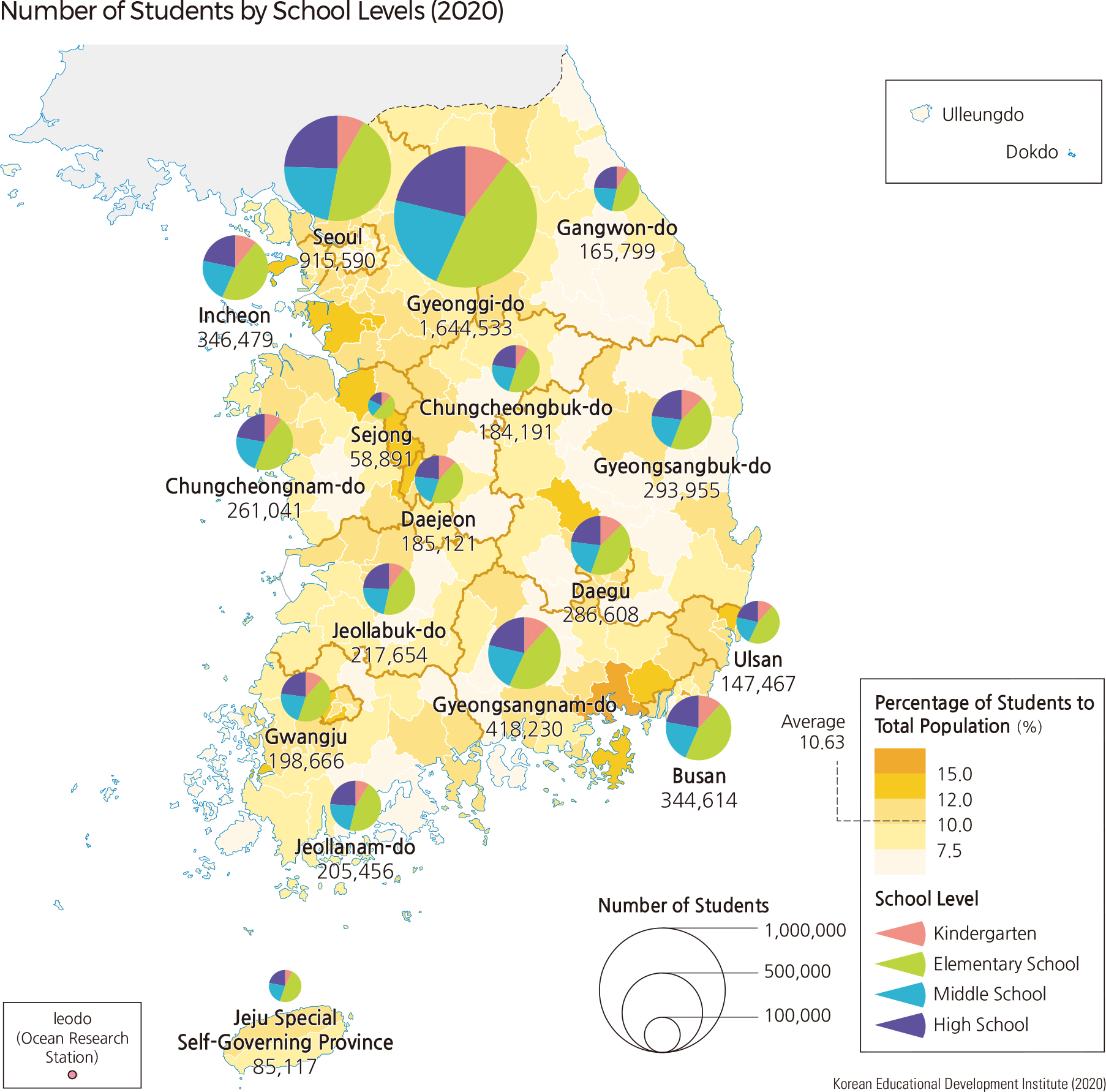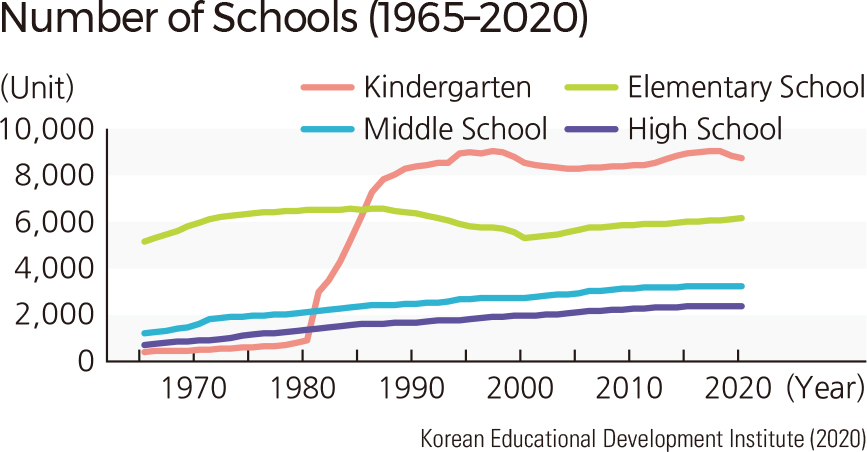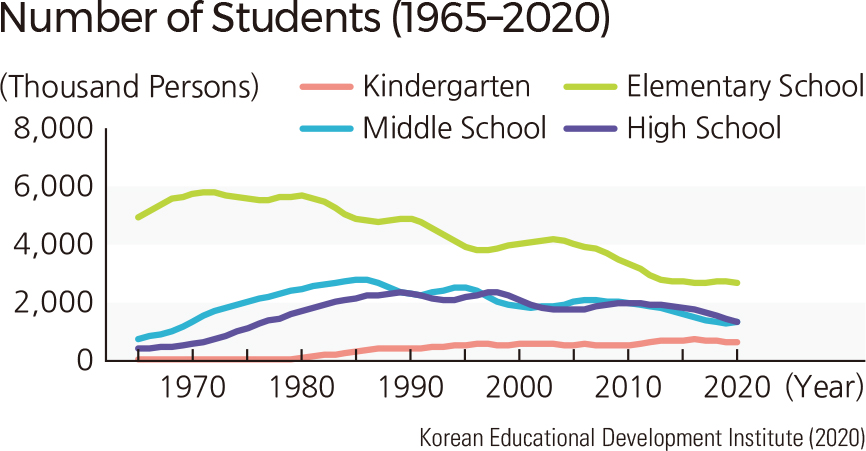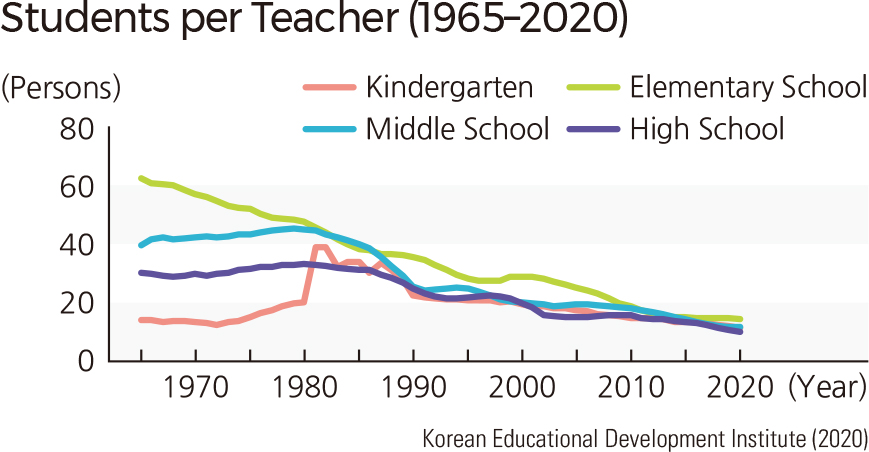Comprehensive Edition 2022
Koreans place a high value and importance on education. Education level is closely tied to many other aspects of society, such as family planning, population structure, household expenditure, residence selection, and city planning. Enthusiasm for education, reflected in a high level of spending, including for private education, are conspicuous characteristics of Korean society.
The Korean school system is composed of elementary education (kindergarten and elementary school), secondary education (middle and high school), and higher education (college and related levels). Most Koreans acquire at least six years of elementary education and another six years of secondary education. The proportion entering higher education institutions is among the highest in the world.
Elementary and secondary education is provided by public educational institutions established by the state, along with a variety of private educational institutions. Various specialized schools have been established that cater to the particular characteristics of their students. At the high school level, more choices, such as college prep, vocational, and technical high schools, are available. Higher education occurs at four-year universities or two-year community colleges. There are also technical colleges that provide training for various professions. Recently, online and extension colleges and degree programs have expanded educational opportunities. Master’s and doctoral degrees are offered by many graduate schools, and many students also pursue graduate study abroad.
The middle school entrance rate in Korea has reached a perfect 100 percent since the late 1980s, and the high school entrance rate has been close to 100 percent since the mid-1990s. Accordingly, the overall number of schools has been consistently increasing, despite the closing of a large number of elementary schools since the 1990s in areas of declining population. Kindergarten enrollment has significantly increased since the 1980s as kindergarten education has become more widely available. On the other hand, the total number of students differs by age group, with the number of elementary students decreasing steadily due to decreasing fertility rates. A declining fertility rate has also resulted in a decrease in the middle and high school populations since the late 1980s. As a benefit, an increase in teacher hires has reduced the number of students per teacher. Changes in school age population vary greatly by region. |









